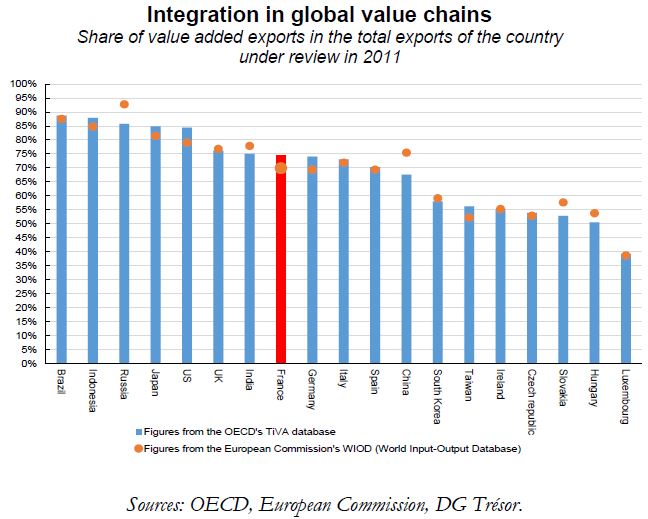Trésor-Economics No. 207 - France's trade in value added
Foreign trade can be analyzed in terms of the domestic value added contained in exchanges. This enables each economy’s own contribution to its exports to be pinpointed, excluding those of other countries involved in the manufacturing process.
In the value added approach, the aggregate trade balances of each country are the usual trade balances, but bilateral balances between countries and sectoral balances may differ substantially from the traditional approach. As a result, France’s main bilateral external deficits in 2011, namely with China and Germany, were lower by reasoning in value added, reflecting the fact that many of the French imports from China and Germany include inputs imported from third countries. Considered in value added terms, French exports also seem less reliant on the European market.
Nevertheless, the relative role of business sectors in France’s balance of goods and services deficit varies only slightly if value added data is used instead of traditional data.
Trade in value added data points to the fact that France increasingly participates in global value chains (GVCs). In 2011, its participation in GVCs was in line with the OECD average.
That year, France’s position, like Germany’s, was slightly downstream in GVCs, whilst the majority of the main developed economies, inter alia the US, Japan and the UK, were positioned more upstream.
France should further promote innovation to roll out high value added activities like design and R&D that appear upstream in the value chains. This would also provide more resilience to possible supply shocks from countries placed further upstream in GVCs.
Foreign trade barriers cumulate along value chains and are therefore more detrimental to countries that are highly integrated in GVCs. In other words, these countries are set to greatly benefit from the implementation of trade deregulation policies.
